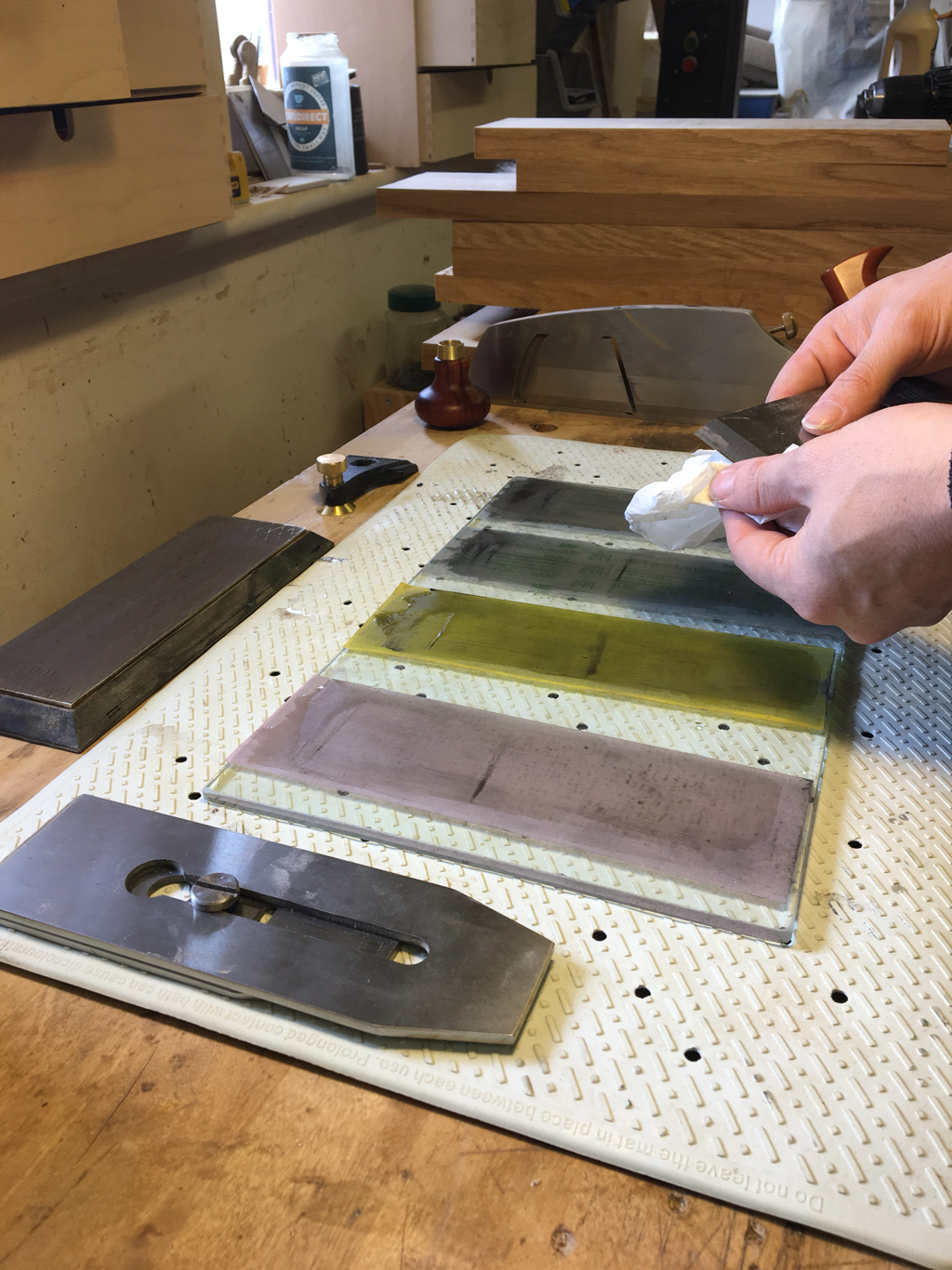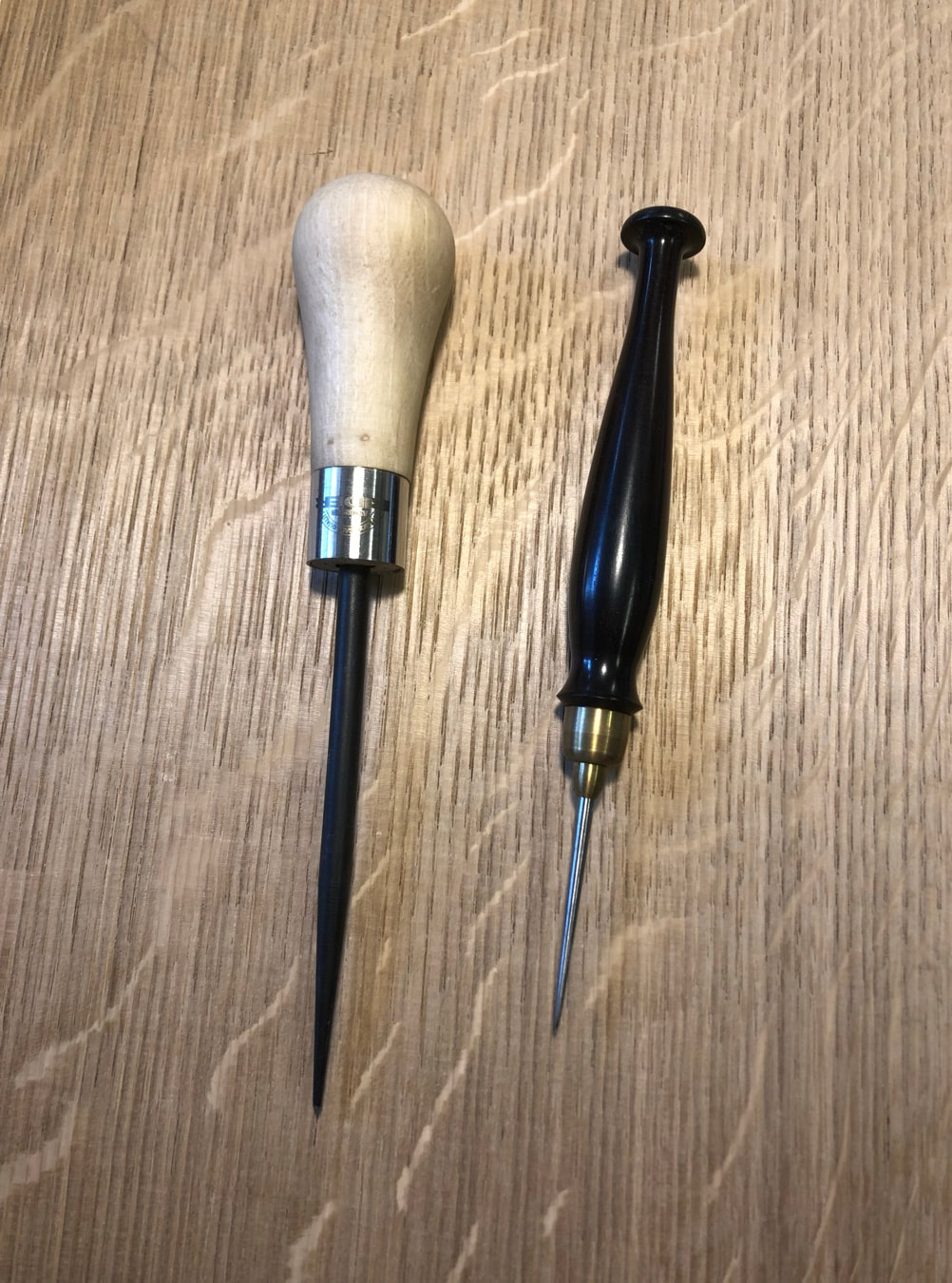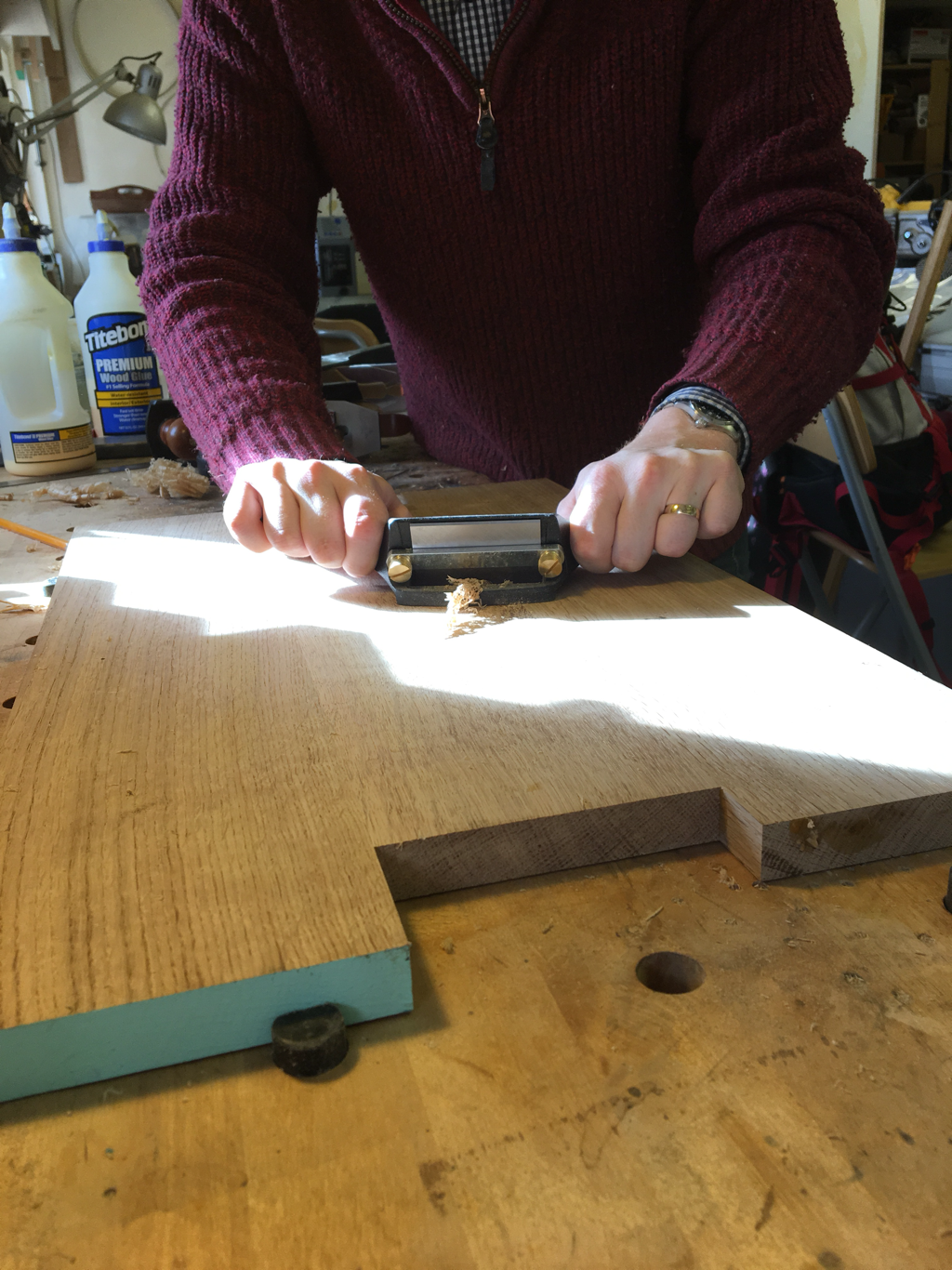|
The router plane seems to be having a bit of a popularity surge lately with prices of older models climbing as a result. Over the last few years my old Stanley 71 1/2 (on the left) has become a firm favourite with students attending my joints courses, several have gone off and added a router plane to their own tool kits as a result 😅
Last year I treated myself to a new Lie-Nielsen no71 (on the right) as with all LN tools it’s beautifully made and works perfectly, it’s a little more user friendly too 😁 What do router planes do? They are used for leveling and making parallel recesses such has housing joints, hinge recesses, tenon cheeks and halving joints. #handtoolthursday
0 Comments
A recent addition to the hand plane stable, a Woden W78 rebate plane (rabbet to those over the pond 🇺🇸) in very good original condition!
The young person I am delivering a City & Guilds course for needed to produce a hand planed rebate as part of a practical assessment, a perfect excuse for me to add to my tool collection 🤭 As the name suggests this hand plane is designed to produce rebates quickly, a rebate could for example be for a door or window frame. So what was in the brown paper package i posted on my instagram story the other day? 🧐 A 2” Barr cabinet makers chisel! 😃 I’ve admired these handmade chisels since I first saw them in a woodwork magazine nearly 20 years ago and not long after in the flesh at college during my apprenticeship! I’ve been using a 2” Ashley Iles chisel for squaring up chunky mortises and chopping wide shoulder lines on tenons among other things for about 12 years but have always found it to be a little too long/unwieldy and the blade a bit thin, this new chisel certainly is better proportioned and has a much more robust blade, really looking forward to using this tool day to day 😁 Welcome to June’s Tool of the Month post! This month a super fast look at a handy tool everybody has used.... the calculator! There really isn’t very much to say about the calculator only that it is very helpful in the workshop for working out all kinds of things from joint layout to converting cutting lists into cubic feet. No matter how good at maths you are a calculator is always worth having!
That’s it for June, look out for July’s Tool of the Month! Welcome to May’s blog post! This month I’ll continue to show the different types of sharpening system I use in the workshop. This time it’s a little look at ‘scary sharpening’. ‘Scary Sharpening’ uses abrasive sheets mounted to a flat surface instead of using individual sharpening stones, this is one of the most affordable sharpening systems available these days and it is the system I’ve been using most over the last few years (I was a bit late to the scary sharp scene).
Unlike water or oil stones this sharpening system never has to be re-flattened due to the flat surface being constant, float glass is the most common surface used but you can also use a bit of mdf or granite. I’ve got one of these... https://www.axminster.co.uk/veritas-glass-lapping-plate-476783 To stop the glass sliding around I use a cheap bath anti slip mat from Tescos! The abrasive films seem to last quite a long time and when they are worn out you simply peel them off and stick a fresh sheet down. I’ve been using the sheets from Workshop Heaven https://www.workshopheaven.com/hand-tools/sharpening-tools/scary-sharpening.html This system works well free-hand or with a honing guide, just have to be a little careful not to tear the abrasive with the blade, but that’s pretty simple once you get used to it. Most of my one to one tuition students find this system perfect for getting started due to its simplicity and low cost. Look out for next months Tool of the Month! Welcome to April’s Tool of the Month, this month a brief look at Awls.... The Awl is a sharp pointed tool with either a round or square shaft. They are generally used for marking holes or scratching lines in timber.
I use mine to accurately mark out holes as the point leaves behind a fine indent which helps guide the drill bit at the start. That’s all for April, look out for May’s post about scary sharpening in a couple of weeks! Welcome to the first blog post of 2019! A short one this month, the scale ruler.. What is a scale ruler and what is it used for?
A scale ruler is very similar to a standard ruler just with extra numbers and scales for each measurement ratio. It’s used to convert measurements/dimensions into a smaller size that’s easier to show on a small plan (designing a house for example). I use a scale ruler every time I design a piece of furniture and use the metric 1:10 and 1:5 scale most often. 1:10 scale turns 10mm (1 cm) into 100mm (10cm) 1:5 scale turns 10mm (1 cm) into 50mm (5cm) That’s all for January, look out for next months Tool! Welcome to September’s Tool of the Month! Following on from last month, a quick look at another type of Diamond Stone. These are diamond sharpening cards, they are small credit card size (80mm by 50mm) diamond plates which are extremely handy in the workshop!
I use mine to sharpen penknives, router cutters and drill bits as these cards are small enough to get to those hard to reach areas! Welcome to April’s Tool of the Month blog post! This month I’ll have a quick look at a tiny Japanese chamfer plane. This little tool is designed to produce repeatable 3mm chamfers on the edges of timber, being Japanese it’s a bit different to the typical types of planes seen here in the west.
In Japan carpenters often work sitting or kneeing on the ground rather than standing at a workbench, to make this practice easier their saws and planes are designed to be pulled towards the user rather than pushed away like they are here in the west. Another difference is they are still mainly made from wood! This little plane wasn’t very expensive (£15-£20) but it’s very useful and if I only have a few edges to chamfer it’s far quicker than setting up a router! That’s all for April, look out for May’s post soon. Welcome to March’s edition of Tool of the Month! This month I’ll give a brief overview of the Veritas Cabinet Scraper. A card scraper is a very simple tool that can be used to remove dried glue and flatten inlays but sharpened carefully it can deal with awkward grain far far better than a bench plane! The tool in the photos is the next step up from the basic card scraper, the card is held in the metal body which stops your fingers getting burnt when the card gets hot! The flat sole also means you can scrape right up to the edge of the workpiece without worrying about the card catching the edge. There is a screw on the back of the tool which allows you to increase or decrease the amount of flex in the blade, this effectively governs the depth of cut! Thats all for now, look out for April’s blog post in a few weeks!
|
About
Welcome to my blog! Here you can see what I have been up to in the workshop, gain an insight into my work and some of the many tools I use to make each piece of bespoke furniture. Archives
April 2024
Categories
All
|









 RSS Feed
RSS Feed